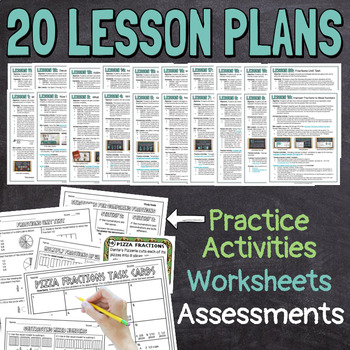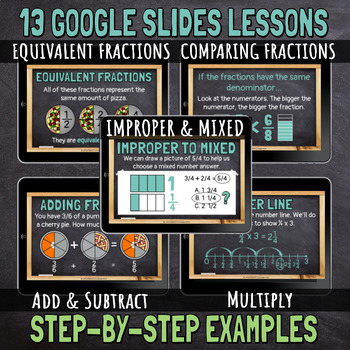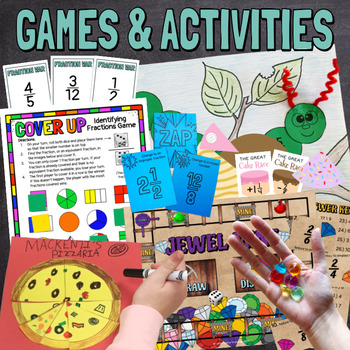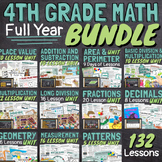4th Grade Fractions 20 Lessons Unit BUNDLE Slides, Games, Worksheets
- Zip

What educators are saying
Products in this Bundle (18)
showing 1-5 of 18 products
Also included in
- This year long fourth grade math bundle includes 132 math lessons spanning 11 different units. All lessons are common core aligned and cover all CCSS standards required for 4th grade math!Begin with each unit guide (these are free and linked below!). The lesson plans will walk you through each unitPrice $156.80Original Price $392.00Save $235.20
Description
This 4th grade fractions math unit includes 20 easy to teach lessons that reinforce and review 3rd grade standards (CCSS) and introduce 4th grade standards (common core aligned).
Skills taught include:
- identifying and naming fractions
- drawing fractions using pie models and bar models
- identifying and generating equivalent fractions
- simplifying (reducing) fractions to simplest form (lowest terms)
- comparing and ordering fractions
- improper fractions and mixed numbers
- decomposing fractions into unit fractions
- adding and subtracting fractions with like denominators
- adding and subtracting mixed numbers with like denominators
- multiplying a fraction by a whole number
This unit bundle includes:
- a unit guide with 20 easy to follow lesson plans for each day plus printable worksheets, activities, a unit test assessment, and answer keys
- 277 Google Slides including 13 lessons and tons of practice problems with animated step-by-step solutions
- 5 fraction games
- hands on activities
- task cards
Please follow my store here for more great resources!
You can also find me on Facebook, Instagram, and lafountaineofknowledge.com where you'll discover ideas, inspiration, and plenty of freebies! Or join my email list to get my monthly newsletter with exclusive FREE resources you can't get anywhere else!
Want free money to spend on Teachers Pay Teachers? Rate this product to earn some TpT credit! Leaving feedback helps us both out and takes less than a minute! Your support makes it possible for me to continue making and sharing great resources! Thank you!






